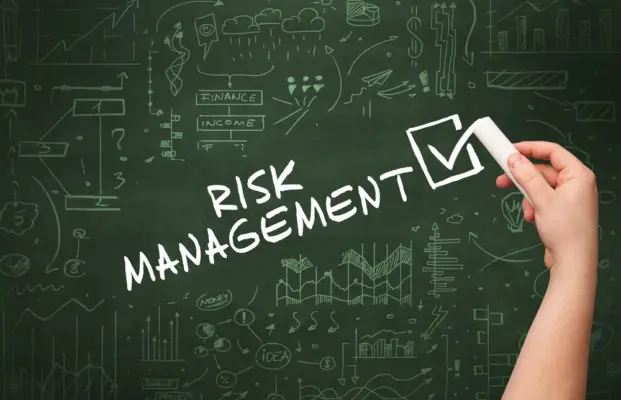A Key Risk Indicator (KRI) and a Key Performance Indicator (KPI) are both metrics used by organizations, but they serve different purposes:
- A KRI is a metric that forecasts potential future problems and is used to measure the likelihood that the combined probability of a risk event occurring and its impact will exceed a certain threshold. KRIs are predictive in nature and provide an early warning to enable proactive risk management.
- A KPI, on the other hand, is a metric that reflects the performance of an organization in achieving its strategic and operational goals. KPIs are used to assess how effectively an organization is achieving key business objectives. They are typically backward-looking, providing data on past performance.
In today’s business landscape, performance measurement is a crucial aspect of evaluating organizational success. Two common terms that often come up in this context are KPIs and KRIs. While they may sound similar, they serve distinct purposes in providing valuable insights into different aspects of business performance.
KPIs, or Key Performance Indicators, help organizations gauge their progress towards specific goals and objectives. On the other hand, KRIs, or Key Risk Indicators, are used to identify and monitor potential risks that could impact the achievement of those goals.
Understanding the relationship between KPIs and KRIs is essential for effective risk management and performance measurement.

So, let’s explore the differences and similarities between these two critical metrics and how they contribute to organizational success.
Key Takeaways
- KRIs and KPIs are essential tools for measuring performance and managing risk effectively.
- KPIs measure performance towards goals, while KRIs identify potential risks.
- Both KPIs and KRIs contribute to achieving organizational objectives effectively.
- Effective use of KPIs and KRIs enhances organizational success.
Definition of KRI and KPI
Key Risk Indicators (KRIs) and Key Performance Indicators (KPIs) are vital tools for organizations in measuring performance and managing risk effectively. KRIs help identify potential risks and provide early warnings, allowing proactive risk management.
On the other hand, KPIs are quantifiable metrics that measure the success of an organization in achieving its objectives. Together, KRIs and KPIs provide a comprehensive framework for monitoring and improving performance while mitigating potential risks.
Importance of KRI and KPI in measuring performance and managing risk
Measuring performance and managing risk are critical tasks in any organization, and understanding the importance of Key Risk Indicators (KRI) and Key Performance Indicators (KPI) is essential in achieving these objectives.
KPIs help measure and evaluate the performance of an organization, indicating whether it is meeting its goals.
KRIs, on the other hand, provide insights into potential risks and help organizations make informed decisions and take necessary actions while staying within their risk appetite.
Understanding Key Performance Indicators (KPIs)
Key Performance Indicators (KPIs) are metrics used to measure the performance of an organization or individual in achieving specific goals and objectives. They provide a clear and quantifiable way to track progress and assess success.
KPIs can be categorized into different types, such as financial, operational, customer, and employee-related, and examples of common KPIs include revenue growth, customer satisfaction, and employee productivity.
Definition of KPIs
To gain a comprehensive understanding of an organization’s performance, it is essential to define and utilize key performance indicators (KPIs).
KPIs are measurable values that provide insight into various aspects of a business. They help monitor progress, identify areas for improvement, and measure the success of strategic initiatives.
KPIs can be used to assess factors such as the time taken to complete processes, the difference in customer satisfaction rates, the level of risk in a company’s profile, and the warning signs of key risks.
Types of KPIs (financial, operational, customer, etc.)
One way to gain a comprehensive understanding of an organization’s performance is by examining the different types of key performance indicators (KPIs), such as financial, operational, and customer metrics. KPIs are used to measure progress towards achieving strategic goals and objectives.
Financial KPIs assess the organization’s financial health and performance, while operational KPIs focus on efficiency and productivity. Customer KPIs gauge customer satisfaction and loyalty.
These indicators provide stakeholders with valuable insights, serve as warning signals, and help in the development of risk indicators, cybersecurity measures, and business objectives over a specific period of time.
Examples of common KPIs used in organizations
Common KPIs used in organizations provide valuable insights into the performance and progress towards strategic goals and objectives. Some examples of these KPIs include:
- Financial performance indicators, such as revenue growth and profit margins, which assess the organization’s financial health and potential impact on business performance.
- Operational performance indicators, like productivity levels and customer satisfaction scores, which measure the efficiency and effectiveness of processes and customer experience.
- Risk management indicators, such as risk assessments and key control indicators, which help identify and manage potential risks to the organization.
- Market share growth and tolerance indicators, which gauge the organization’s market competitiveness and ability to adapt to changing market conditions.
Understanding Key Risk Indicators (KRIs)
To understand key risk indicators (KRIs), it is important to first define them.
KRIs are measurable parameters or metrics that organizations use to identify and monitor potential risks.
There are different types of KRIs, including leading and lagging indicators, as well as qualitative and quantitative ones.
Examples of common KRIs used in risk management include customer complaints, employee turnover, and financial ratios.
Definition of KRIs
A key risk indicator (KRI) is a measurable metric used to assess and monitor potential risks within an organization. KRIs play a crucial role in the risk management process by providing insights into the risk landscape.
They serve as performance metrics that help gauge actual performance against business goals and strategic objectives. Regular reviews of RIs can identify warning signs and potential impact on business performance, allowing organizations to take proactive measures to mitigate risks.
Types of KRIs (leading, lagging, qualitative, quantitative)
Key risk indicators (KRIs) can be classified into different types based on their nature and purpose, including leading, lagging, qualitative, and quantitative RIs.
Leading indicators are used to predict and anticipate potential strategic risks, while lagging indicators provide insights into past performance.
Qualitative indicators involve subjective assessments of risks, while quantitative indicators involve objective measurements.
These different types of KRIs are important in performance management, as they help organizations assess and monitor their risk management strategy and identify potential risks.
Examples of common KRIs used in risk management
Common Key Risk Indicators (RIs) used in risk management provide organizations with valuable insights into potential risks and assist in the assessment and monitoring of their risk management strategy. Examples of common KRIs include:
- Number of risk events identified and reported in the risk register.
- Percentage of strategic plans that incorporate risk mitigation measures.
- Level of investment in risk mitigation activities.
- Effectiveness of the corporate governance framework in managing risks.
These KRIs help the risk management team in identifying, measuring, and monitoring risks, thus enabling effective enterprise risk management.
The Relationship Between KPIs and KRIs
The relationship between KPIs and KRIs is an important aspect of risk management.
While KPIs focus on measuring performance and progress towards organizational goals, RIs are used to identify and monitor potential risks that could impact those goals.
However, there can be overlapping elements between KPIs and KRIs, as certain KPIs can also serve as early warning signals for potential risks.
This relationship between KPIs and RIs allows organizations to proactively manage risks and make informed decisions to achieve their objectives.
Differentiating between KPIs and KRIs
KPIs and KRIs are distinct yet interconnected metrics that play vital roles in measuring the performance and risk of an organization. To differentiate between the two, consider the following:
- Risk exposure: KRIs focus on identifying and assessing potential risk factors that may impact the organization’s security and performance.
- Risk management approaches: KRIs help in monitoring and evaluating the effectiveness of risk management strategies and initiatives.
- Risk scenarios: KRIs provide insights into possible risk situations and trends, enabling proactive measures to be taken.
- Unnecessary risk exposure: KPIs assess the organization’s current performance and highlight areas where unnecessary risk exposure may be present.
Overlapping elements between KPIs and KRIs
There are several key elements that overlap between KPIs and RIs, highlighting the interconnectedness of these metrics in measuring organizational performance and risk.
Both KPIs and RIs are used to monitor the achievement of organizational goals and objectives. They both require regular measurement and monitoring over a specific time period.
Additionally, they can both be used to identify potential security breaches and the need for corrective or remedial action. For example, employee satisfaction, measured as a percentage of employees, can be considered both a KPI and a RI, as it indicates the level of satisfaction within the organization and can serve as an early warning sign for potential risks.
How KPIs can be used as early warning signals for potential risks
Effective monitoring of Key Performance Indicators (KPIs) can provide valuable early warning signals for potential risks within an organization. By tracking customer complaints, internal processes, process inefficiencies, and membership growth through KPIs, organizations can identify areas of concern and take a proactive approach to mitigate risks.
Additionally, monitoring financial metrics and the achievement of objectives can help in assessing the overall health of the organization. Incorporating an effective risk metrics program, including risk perception and security assessments, can further enhance the organization’s risk management efforts.
Incorporating Risk Management into Performance Measurement
To enhance performance measurement practices, it is essential to consider the integration of risk management strategies.
Risk management should be incorporated into performance measurement to ensure that strategic decisions are well-informed and aligned with the overall business strategy.
By using mathematical models and customer metrics, organizations can gain valuable insights into potential risks and make more informed strategic business decisions.
Regular monitoring of key performance indicators (KPIs) as a forward-looking indicator is a key component of effective risk management.

Frequently Asked Questions
What Are Some Common Examples of Key Performance Indicators (Kpis)?
Key performance indicators (KPIs) are measurable values that indicate the success of an organization in achieving its objectives. Some common examples of KPIs include revenue growth, customer satisfaction ratings, and employee productivity metrics.
How Can Businesses Use Key Risk Indicators (Kris) to Proactively Manage Risks?
Businesses can proactively manage risks by utilizing key risk indicators (KRIs). RIs are metrics that measure potential risks and provide early warning signals, allowing businesses to take preventive actions and mitigate potential negative impacts on their objectives and operations.
Are KPIs and KRIs Interchangeable Terms or Do They Have Distinct Meanings?
While KPIs and KRIs are related to measuring performance and managing risks, they have distinct meanings. KPIs are used to track progress towards business objectives, while RIs are indicators that identify potential risks and vulnerabilities.
Can Key Risk Indicators (Kris) Be Used to Measure the Success of a Company’s Risk Management Efforts?
Key risk indicators (KRIs) are metrics used to monitor and identify potential risks within an organization. While KRIs are primarily focused on risk management, they can indirectly measure the success of a company’s risk management efforts by highlighting areas of concern and enabling proactive mitigation strategies.
What Are Some Potential Challenges or Limitations When Incorporating Risk Management Into Performance Measurement Using KPIs and Kris?
Some potential challenges or limitations when incorporating risk management into performance measurement using KPIs and RIs include data quality issues, difficulty in defining and measuring risk-related metrics, and the need for ongoing monitoring and updating of risk indicators.

Conclusion
In conclusion, Key Performance Indicators (KPIs) and Key Risk Indicators (KRIs) are both important metrics used for performance measurement and risk management in organizations.
KPIs focus on measuring the achievement of specific goals and objectives, while RIs are used to monitor potential risks and vulnerabilities.
By incorporating risk management into performance measurement, organizations can effectively identify and address potential risks, ultimately leading to improved performance and decision-making.

Chris Ekai is a Risk Management expert with over 10 years of experience in the field. He has a Master’s(MSc) degree in Risk Management from University of Portsmouth and is a CPA and Finance professional. He currently works as a Content Manager at Risk Publishing, writing about Enterprise Risk Management, Business Continuity Management and Project Management.

